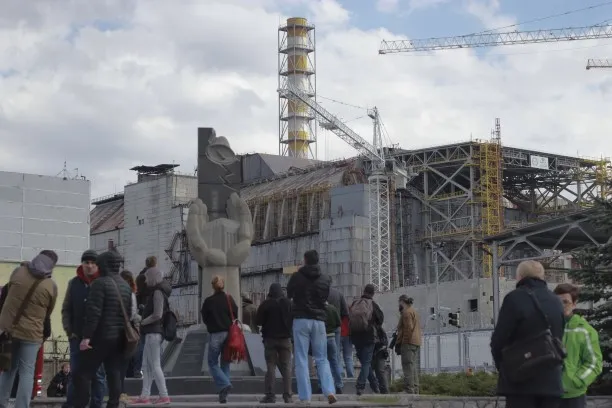
Ukraine has been going through a political crisis in the past years. But despite general instability and conflicts, the country hopes in recovery. According to Ukraine’s Vice Prime Minister, as well as the Minister of Economy, Stepan Kubiv, 13.6 million foreigner tourists visited the country in 2016. Kubiv is optimistic about the future and expects better numbers for tourism in Ukraine.
This year’s numbers of foreign tourists represent an increase compared to last year’s 12.9 million. However, it is still not too much to rejoice about. The increase is positive, but the data is still far away from Ukraine’s inflow in 2013, before the outbreak of the conflict. In that year 25.7 million foreigners visited the country. Nearly twice as much as this year.
The annexation of Crimea represented a great loss for Ukraine in terms of tourism. The peninsula was a popular attraction for tourists. Before the annexation, some 5.9 million travelers visited Crimea in 2013, while in 2012 as much as 6.1 million arrived to the annexed territory.
However, the chaotic situation within the country has also brought some positives. The devaluation of the hryvnia (Ukrainian currency) has led to the fall in prices. Thus, the country is now much more affordable, which could lead to further increase in tourism inflow.
Tourism Authorities Are Overoptimistic
Ukraine’s government has recently approved a strategy for development of tourism in Ukraine until 2026. The strategy should define the approach of the state tourism policy in terms of safety, regulatory and legal support, infrastructure development etc. The document also predicts that the number of foreign tourists in Ukraine will increase 2.5 times. The number of domestic tourists is expected to increase 5 times, while the same applies to the number of jobs in the tourism sector.
The Ministry of Economic Development also predicts an increase in the number of tourist activities 5 times and 80 billion USD are expected to be spent by tourists while traveling around the country.
These predictions seem to be a bit over the top according to the experts. Especially considering the data representing the foreign inflow mentioned above, as well as the continuous unrest in the country. Other aspects such as criminality, corruption and limited or no access to separatist regions are also factors that are not helping the positive reputation of the country.

New Source Markets
Russians have been the main source market of tourism in Ukraine. In 2013 10.3 million Russians visited the country. This year the number was significantly lower, 1.5 million Russians visited their western neighbor.
Thus, Ukraine is looking at other source markets to heal the wounds. 4.3 million Moldovans visited the country in 2016, while 200 thousand Turks arrived, but it may be much more in the following months. The reason behind this is the fact that on March 14 this year Turkey and Ukraine signed an agreement allowing their citizens to travel to each other’s countries without a passport. Both countries, amid political chaos, hope to boost tourism by this act.
Meanwhile, Ukraine is dreaming of attracting visitors from China to the country. As of now, the inflow of Chinese tourists to Ukraine is very low – about 20 thousand in 2016. Potential Chinese visitors are mainly concerned about the security and safety problems. Organized tours are a rarity, as state-owned companies are afraid to offer trips to Ukraine due to the lack of safety guarantees. Therefore, to attract Chinese citizens, the Ukrainian industry has to offer something completely new and an unprecedented experience, which is something what the authorities are trying to do.

Unwanted Travel Segments: Sex tourism and Chernobyl?
In order to differentiate themselves from others, the authorities are looking at the niche sectors of the tourism industry. One of these is the so called sex tourism. The country has become a favorite destination for sex tourists. It is a combination of several factors: poverty of the population, feminization of poverty, little room and well-established criminal organizations.
British experts are predicting a boom of this type of tourism among Brits following Ryanair’s introduction of flights to Ukraine. “The main reason why British men go to Ukraine are the beautiful women, and a lot of them,” said the representative of Ukraine Adventures, which organizes such tours to Ukraine for Brits.
Ukraine wants to promote local wine tourism. According to Ukrainian expert Alexei Bezugly, wine tourism has a great potential. The expert also adds that it is necessary to popularize Ukrainian wine, which “is not worse than foreign wine”.
Moreover, in 2011 parts of the Chernobyl nuclear plant were opened for tourists. About 10,000 people visit the exclusion zone every year to observe the wildlife, abandoned houses and other interesting things. However, tourism in this area may be a problem for the wildlife as well as the scientists studying the area.
How Safe Is Ukraine?
According to the Global Peace Index (GPI) report from the Institute of Economics and Peace, Ukraine is the 8th most dangerous country in the world.
The government of Great Britain advises against all travel to the Donetsk and Luhansk oblast, as well as Crimea. Eastern Ukraine as a whole remains unstable and full of conflicts. Under Ukrainian law it is illegal to enter internationally recognized Ukrainian territory through border points not controlled by the Ukrainian authorities.
On the other hand, the situation in Kyiv and other areas outside Donetsk and Luhansk is generally calm. Many demonstrations take place in Kyiv and even though all areas are generally calm, some may turn violent. Ukrainian roads are known for high numbers of traffic accidents.
Eurovision 2017, Sign of Hope?
In May 2017, Ukraine will host the Eurovision song contest. Authorities and the public does not expect major security problems and organizers are assuring that safety is guaranteed. According to preliminary data, nearly 30 thousand foreign tourists will come to Kyiv for the music contest. Kyiv authorities hope to earn 600 million hryvnia (about 21 million euros) during this year’s Eurovision.










